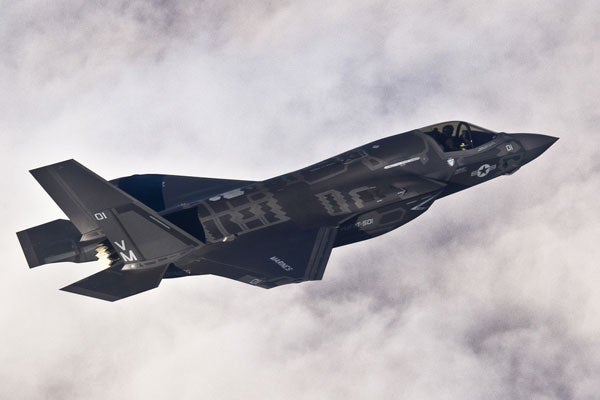It’s a Bird! It’s a Plane! It’s the F-35 Joint Strike Fighter!
Bianca Falcone /
On November 15, the 33rd Fighter Wing of the U.S. Air Force successfully completed training and flying exercises in its operational utility evaluation (OUE) for the F-35A Joint Strike Fighter (JSF). This milestone means the Air Force now has four newly qualified F-35A pilots and 135 tested personnel qualified to maintain the aircraft.
Conducted at Eglin Air Force base, the OUE tested the F-35A training program, which went so well that the flying portion was completed in less than half of the expected time. This marks a significant achievement in the Air Force’s F-35A training program. It is now expected that upon review, the Air Education and Training Command will approve formal F-35A training for Air Force pilots.
Another landmark event for the F-35 JSF took place yesterday, when Marine Fighter Attack Squadron 121 became the first operational JSF squadron. At Marine Corps Air Station Yuma, the launch of the squadron marks significant progress in the incorporation of the F-35.
These milestones could not have come at a better time. The Air Force, Marine Corps, and Navy are all in need of serious aircraft modernization. Fighters are being flown well over their intended service lives, and more than half of the deployed Navy aircraft are not suitable for combat missions. In addition, since 2001 the number of Air Force fighters has fallen by about 25 percent. Luckily the F-35, a fifth-generation stealth aircraft, is poised to replace the aging F-15, F-16, A-10, F-18, and AV-8B Harrier fleets.
The introduction of the F-35, which is designed in three different variants for use by the Air Force, Navy, and Marine Corps, will greatly increase military readiness and breathe new life into the three services. The F-35 is designed with greater electronic ability than any previous fighter, has an infrared tracking system and highly advanced radar, and can launch missiles at maximum supersonic speed.
Due to its advanced technology, the F-35 appears four times more effective than legacy fighters in air-to-air combat, eight times more effective in air-to-ground combat, and three times more effective in reconnaissance and suppression of air defenses. The F-35 has been described as “hard to find, hard to hit, and hard to kill.”
Yet President Obama’s fiscal year (FY) 2013 budget would eliminate 13 F-35s in FY 2013 and 179 in the coming five years. This could pose a severe risk to U.S. military readiness.
As The Heritage Foundation argues in “Full-Spectrum Air Power: Building the Air Force America Needs,” continuing the F-35 program as planned will be integral to preventing regional aggression of rogue states (such as North Korea and Iran) and quelling the tide of nuclear proliferation, two of the biggest security issues facing the United States today.
Cultivating a robust aviation program is critical to supporting national security. The F-35 is poised to play a fundamental role in the future of U.S. air power and dominance. Congress and the Administration should work together to support and maintain America’s air superiority into the future.
Bianca Falcone is currently a member of the Young Leaders Program at The Heritage Foundation. For more information on interning at Heritage, please visit http://www.heritage.org/about/departments/ylp.cfm.

